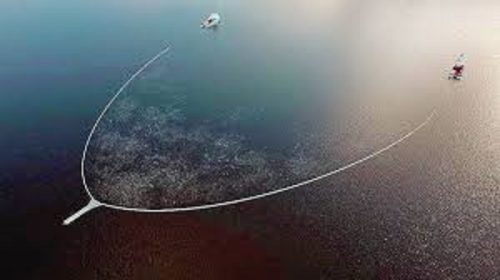31 October 2023

When business leadership group the World Economic Forum (WEF) recently asked on social media for audience suggestions for tackling ocean pollution, industry commentator Dr Dietrich Tegtmeyer quickly recommended using leather in more products. Report by Leatherbiz.
WEF asked the question as part of its celebration of the work of non-profit group The Ocean Cleanup, which specialises in developing technology solutions for removing plastic waste from the oceans.
The Ocean Cleanup has said it aims to remove 90% of ocean debris by 2040. Its estimate is that plastic makes up 80% of all the rubbish in the oceans and that 14 million tonnes of plastic go into the oceans of the world each year.
Its current technology includes a skimming device that it stretches between two vessels. In a recent exercise in the North Pacific, this skimming device collected 11 tonnes of plastic waste in one week, which the vessels took to British Columbia in Canada for sorting and recycling.
Based on what it has learned from this technique, The Ocean Cleanup is preparing to launch a new skimming device that is three times bigger than the current one. It was in its celebration of this that WEF asked social media users for their suggestions.
Dietrich Tegtmeyer pointed out that the 11 tonnes of waste The Ocean Cleanup collected during its recent one-week exercise in the North Pacific did not contain leather.
“There were 11 tonnes of trash and not even one gramme of leather,” said Dr Tegtmeyer, global head of business development and industry relations at leather chemicals group TFL. He said this was because any leather in waste streams would have biodegraded already on its way to the ocean.
We bring leather, material and fashion businesses together: an opportunity to meet and greet face to face. We bring them from all parts of the world so that they can find fresh partners, discover new customers or suppliers and keep ahead of industry developments.
We organise a number of trade exhibitions which focus on fashion and lifestyle: sectors that are constantly in flux, so visitors and exhibitors alike need to be constantly aware both of the changes around them and those forecast for coming seasons.